Balance training is more complex than standing on one leg; it is a human movement that stimulates proprioception. One goal of trainers is to increase agility and one’s ability to stay upright when shifting center of gravity during movement. Trainers can progress a balance program by incorporating balance-challenge methods with movement, focal points, unstable surfaces and outside stimulus such as exercise equipment.
The example below will show how to gradually progress a traditional balance exercise. The exercise used will be the traditional one-legged stance in which the lifted leg is at 90-degree hip flexion. Variables will be added to demonstrate how to safely and effectively progress the balance exercise.
90-Degree Hip Flexion Balance Exercise
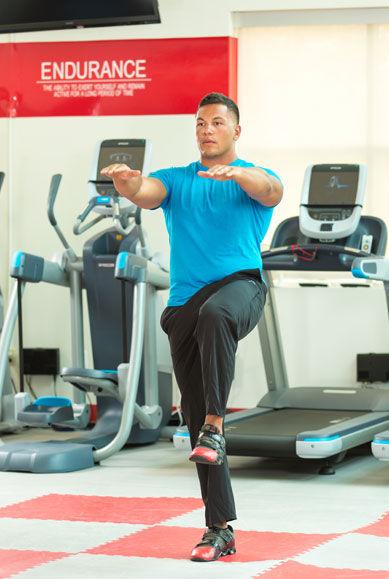
Stand upright with feet hip distance apart. Stabilize the core and the left foot into the ground. Cue the client to focus the eyes on a focal point on the wall or floor in front of them. Lift the right leg at 90 degrees and keep the foot flexed. Extend the arms and place them at shoulder height. If the client needs balance support, place one hand on a wall or chair.
90-Degree Hip Flexion Balance with Eye Gaze Manipulations
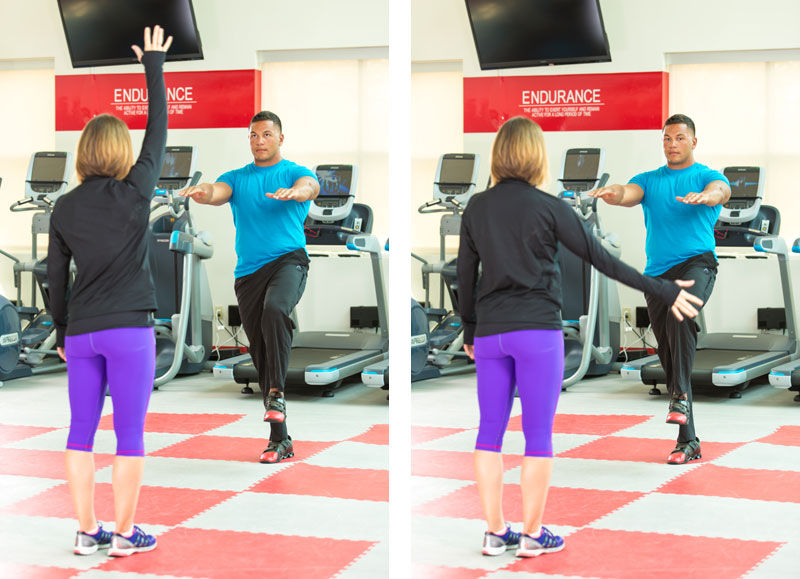
Stand upright with feet hip distance apart. Stabilize the core and the left foot into the ground. Lift the right leg at 90 degrees and keep the foot flexed. Extend the arms and place them at shoulder height. Cue the client to track their eyes on a moving object, such as a trainer moving his or her hand, or telling them to look at certain objects in the room.
Once the client has mastered this challenge, have them close one, and then both eyes to focus on balancing while stimulating their vestibular (inner-ear) system.
90-Degree Hip Flexion Balance with Arm Movements
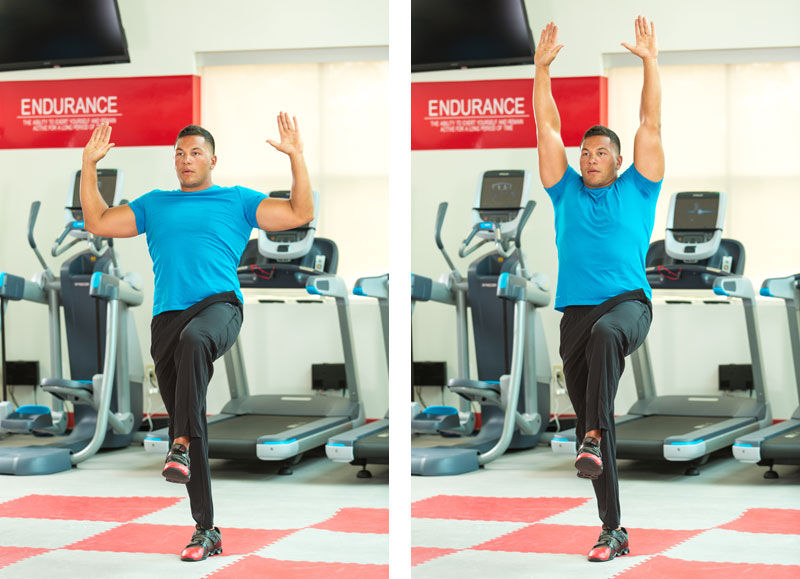
Stand upright with feet hip distance apart. Stabilize the core and the left foot into the ground. Cue the client to focus the eyes on a focal point on the wall or floor in front of them. Lift the right leg at 90 degrees and keep the foot flexed. Place the arms at 90 degrees, similar to a cactus or goalpost position. Reach the arms overhead and then bring the arms back to 90 degrees. The scapula will move in an upward rotation and downward rotation motion with the arms.
90-Degree Hip Flexion Balance with Medicine Ball Tosses
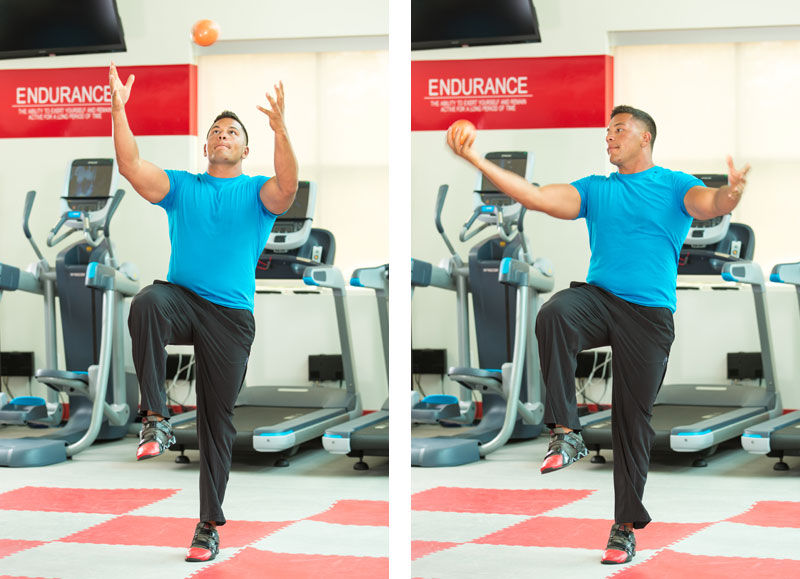
Stand upright with feet hip distance apart. Stabilize the core and the left foot into the ground. Lift the right leg at 90 degrees and keep the foot flexed. Place a small medicine or tennis ball into the client’s hand and have them toss the ball back and forth into each hand. Cue the client to track the ball with his or her eyes.
90-Degree Hip Flexion Balance with Torso Rotation
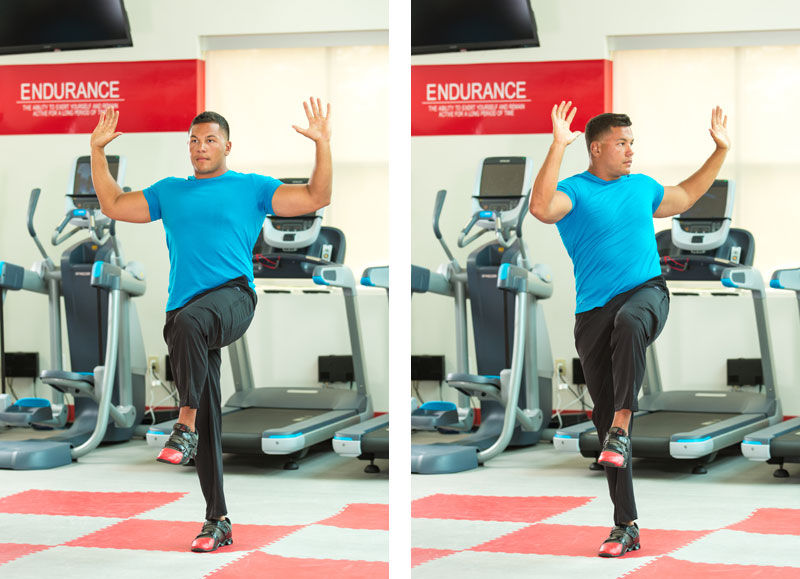
Stand upright with feet hip distance apart. Stabilize the core and the left foot into the ground. Lift the right leg to 90 degrees and keep the foot flexed. Place the arms at 90 degrees, similar to a cactus or goalpost position. Cue the client to focus the eyes on a focal point on the wall or floor in front of them. Next, cue the client to rotate the left elbow toward direction of the right leg. Maintain an upright posture. When the client has mastered the challenge, have them move the eyes with the movement. This range of motion is more challenging than the arm movement because it moves more body parts.
90-Degree Hip Flexion Balance with Unstable Surfaces
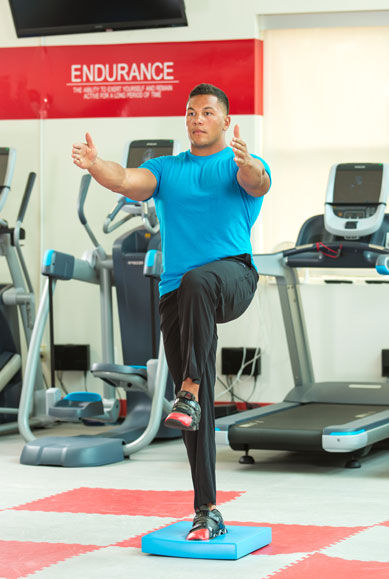
Unstable surfaces are best progressed when moving from hard to soft surfaces and from tennis shoes to bare feet. A general progression for unstable surfaces includes standing on a hardwood (or concrete) surface and progressing to carpet, a thin mat (yoga mat), a thick mat or pad (a gym or Airex pad) and finally an unstable surface such as a BOSU. A tennis shoe provides more stability thus making most balance exercises more achievable than with a barefoot.
Stand upright with feet hip distance apart on a soft surface such as a carpet, mat or pad. Stabilize the core and the left foot into the ground. Cue the client to focus the eyes on a focal point on the wall or floor in front of them. Lift the right leg to 90 degrees and keep the foot flexed. Extend the arms and place them at shoulder height. Use a chair or wall to assist with the exercise, if needed. Once the client has mastered this, trainers can progress clients on more unstable surfaces and eventually add in movement or eye gaze manipulation.




 by
by 






 by
by